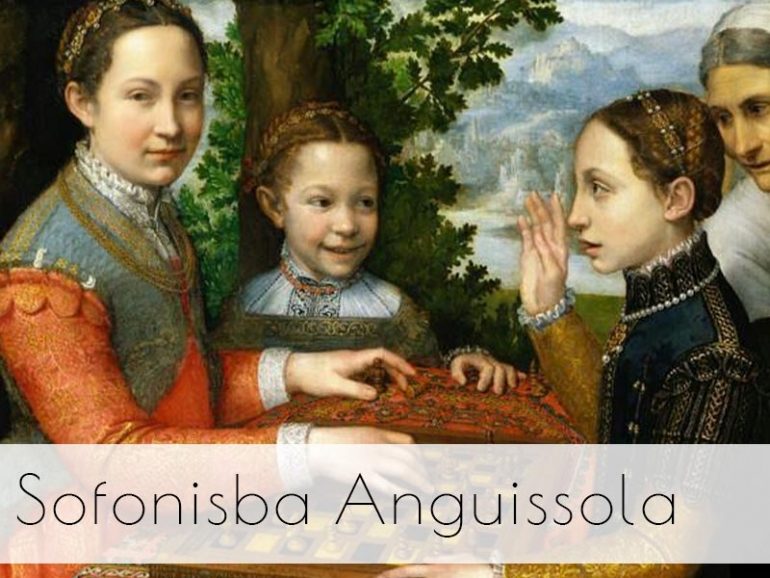Sofonisba Anguissola, a trailblazing Italian Renaissance painter, defied the societal norms of her time to become one of the first recognized female artists. Born in Cremona, Italy, around 1532, Anguissola’s mastery of portraiture and her contributions to the art world have solidified her place in history. We hope our students enjoy reading a light overview of Sofonidba’s life along with her remarkable paintings.
“Self-Portrait at the Easel” (c. 1556-1557)
A testament to Anguissola’s early prowess, this self-portrait exemplifies her ability to capture emotion and depth. Displayed at the Museum of Fine Arts, Boston, the painting showcases Anguissola at work, holding a paintbrush and looking directly at the viewer. Her command over the medium of oil on canvas and the nuanced rendering of her expression provide insight into her technical skill and introspective approach to portraiture.
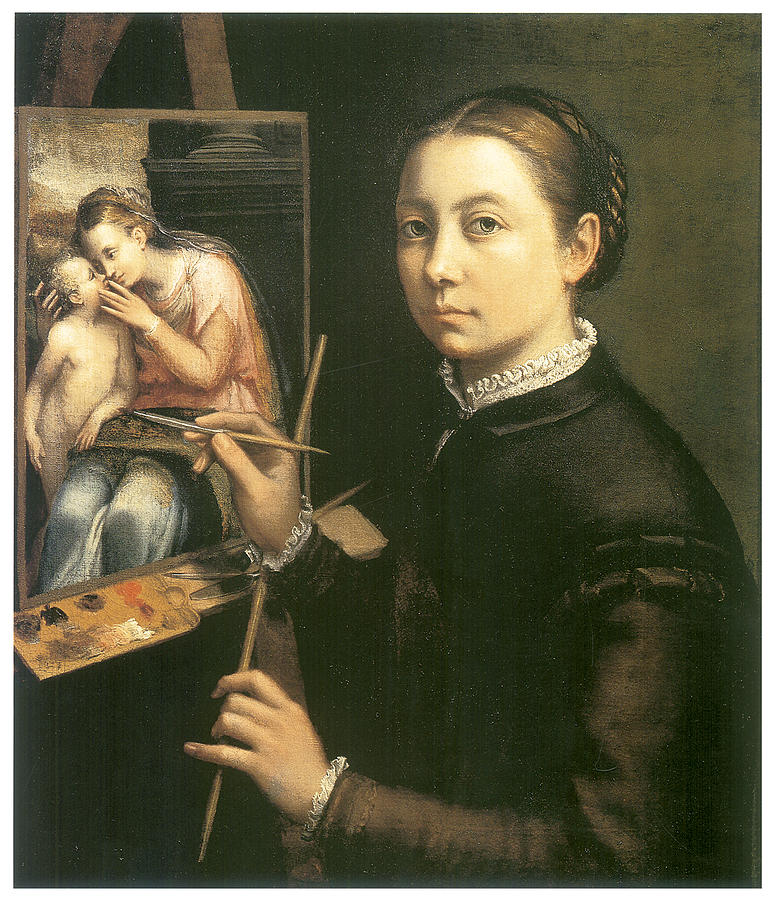
“The Chess Game” (c. 1555)
A charming glimpse into the everyday life of the Anguissola family, “The Chess Game” is a testament to Sofonisba’s ability to convey narrative through portraiture. Currently housed at the Muzeum Narodowe w Poznaniu in Poland, this composition captures the artist and her sisters engaged in a game of chess. Anguissola’s keen eye for detail and the dynamics between the figures showcases her gift for storytelling within a single frame.
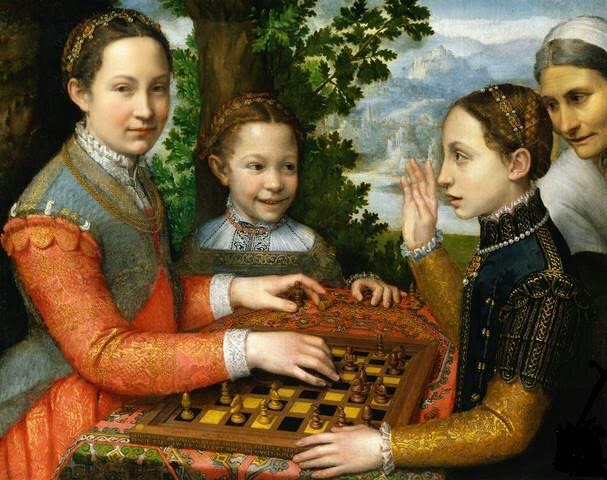
“Portrait of Queen Isabella of Valois with a Child” (c. 1570-1573):
Commissioned to paint the young Queen Isabella of Valois with her son, this portrait, currently displayed at the Uffizi Gallery in Florence, highlights Anguissola’s favor among European nobility. Her ability to capture the regality of the queen and the tender interaction with her child showcases Anguissola’s versatility in conveying both formal portraiture and intimate moments.
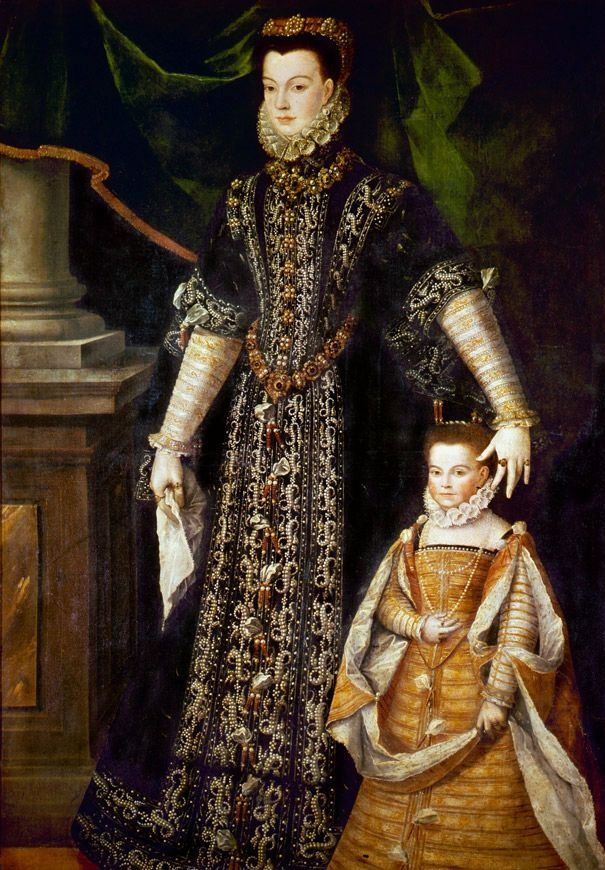
“Portrait of the Artist’s Family” (1558–59)
This artwork captures the artist’s family set against a scenic landscape, featuring her father Amilcare, sister Minerva, and brother Asdrubale accompanied by their cherished pet dog. The painting is widely acknowledged as incomplete, with the speculation that Sofonisba Anguissola left it in its unfinished state due to a summons by King Philip II of Spain. Subsequently, she served as the court painter for a remarkable two decades. Notably, this portrait stands as the sole known depiction of her father. Interestingly, Sofonisba had previously painted Minerva a few years earlier when creating an image of her sisters engaged in a game of chess.
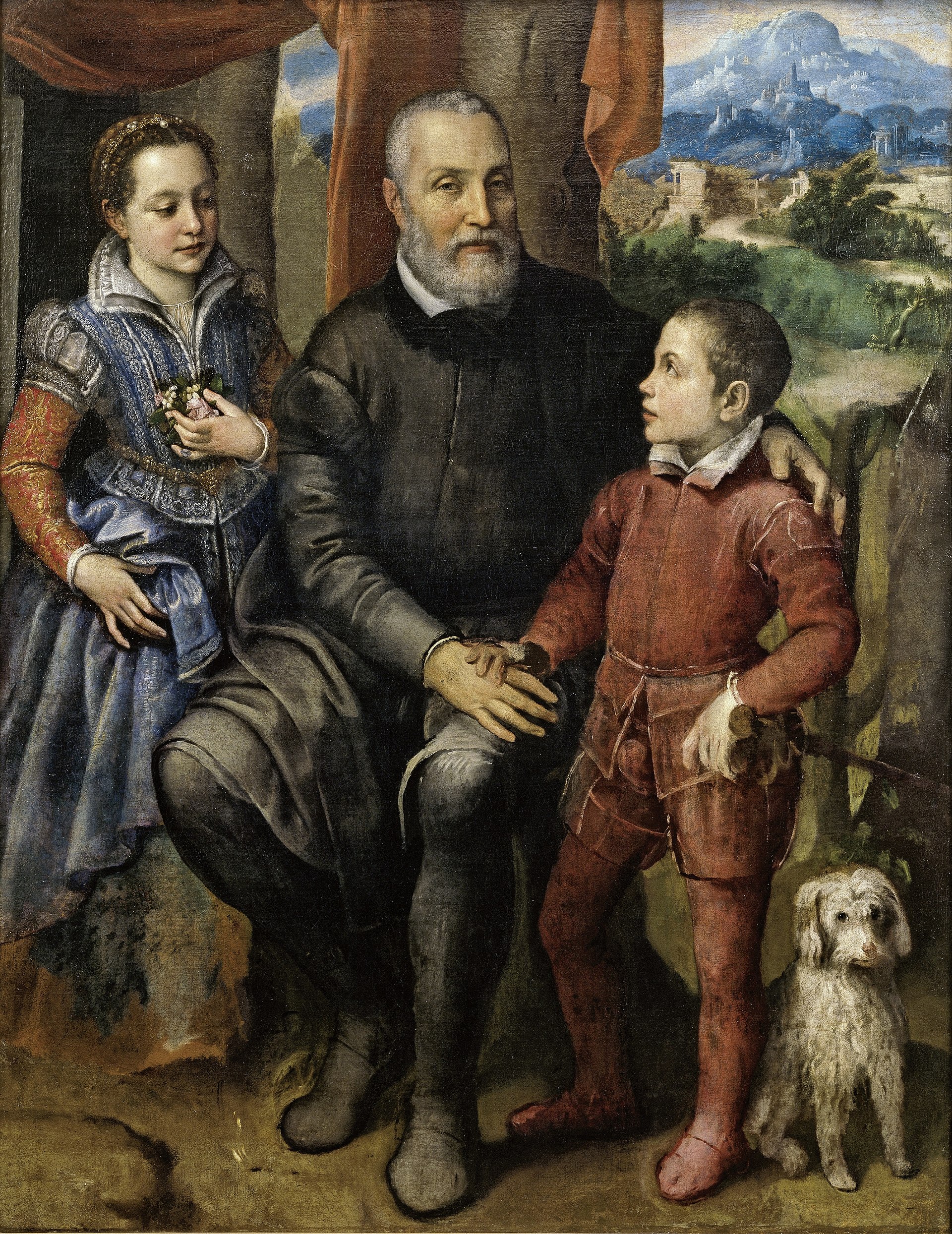
Sofonisba Anguissola’s life was marked by her pursuit of artistic excellence in a male-dominated Renaissance art world. Her studies under Bernardino Campi and later with Michelangelo greatly influenced her technique and style. Breaking free from societal constraints, Anguissola’s talent gained recognition, leading to her appointment as court painter to Philip II of Spain.
Art enthusiasts can explore Sofonisba Anguissola’s captivating works at various institutions, including the Museum of Fine Arts, Boston, the Muzeum Narodowe w Poznaniu in Poland, the Uffizi Gallery in Florence, and the National Museum of Women in the Arts in Washington, D.C.
Sofonisba Anguissola’s legacy extends far beyond her role as an exceptional female artist in the Renaissance; she was a trailblazer who paved the way for future generations of women in the arts. Through her compelling portraits, we witness not only the technical brilliance of an artist but also the warmth, humanity, and narrative depth that set her apart. As we immerse ourselves in her masterpieces, we celebrate the enduring legacy of Sofonisba Anguissola and her profound impact on the art world.
If you would like to receive a roundup of all of our blog posts once a week to keep you inspired in your inbox, why not sign up to our newsletter. You can access our sign up at the top of our page. If you are a London Art College student and you would like your artwork featured here, drop us a line at any time.

